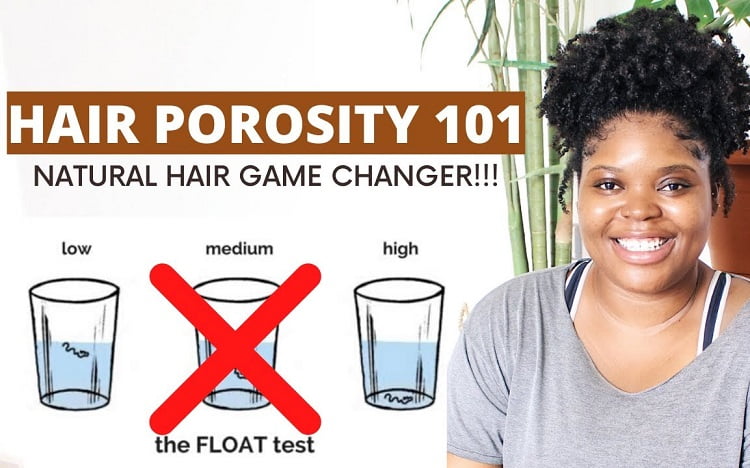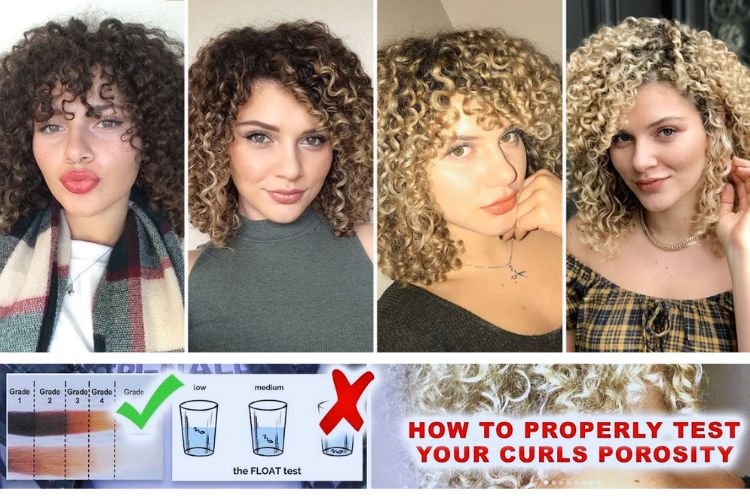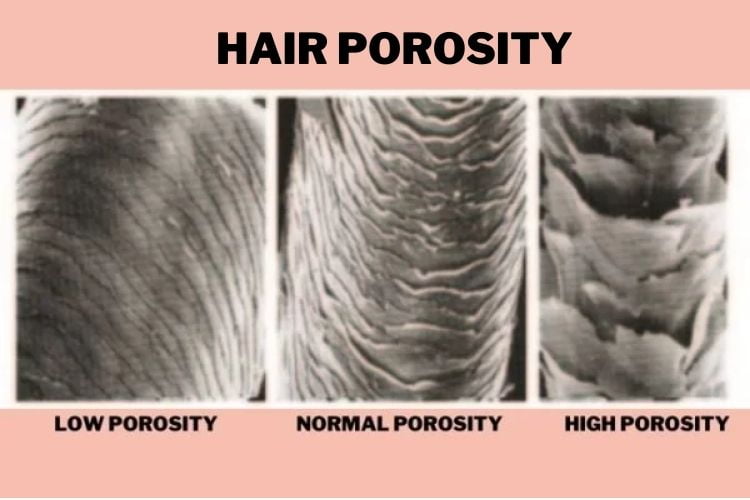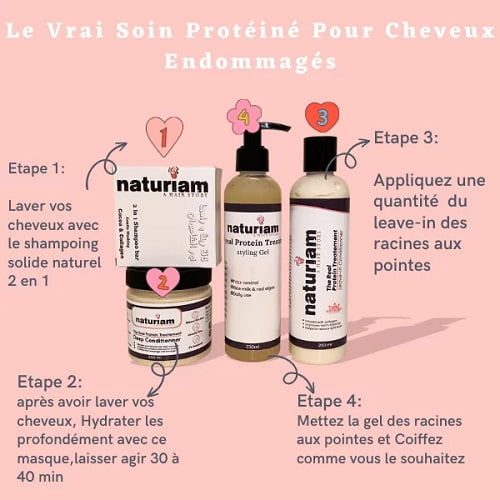With a consistent hair care routine, you can have healthy curly hair. Knowing and understanding what your hair loves and what one should avoid is the best way to create the most effective hair regimen. For a thriving mane, the right products are essential. Hair is more complex than you think. It is made up of a protein known as keratin.
Hair contains essential components that compound together to characterize it. This includes; hair texture(wavy, curly, or coily), hair porosity, follicle size, hair shaft diameter, and thickness. Hair porosity is one of the important characteristics to take into account for the health of curly hair.
Hair porosity determines how much protection your hair needs, its ability to retain water, products, hair treatments, and the time it takes to lose water. This is regulated by the hair cuticle which is the outer protective layer of the hair’s structure that allows for water and other products into the inner layer of the hair. Think of the hair cuticle as a door that opens and closes.
What Causes Hair Porosity
Hair Porosity is primarily determined by genetics and hair practices. Hair Porosity can vary in different parts of the head and even on different lengths depending on hair grooming techniques that could alter and damage the hair cuticle.
A damaged hair cuticle is chipped or torn exposing the inner hair layer’s hair cortex to damage and drying. Those with textured hair particularly curly, wavy, or kinky hair will be subjected to more wear and tear naturally. Sebum (hair’s natural oil) takes a while to travel down the hair strands to lubricate and coat the hair strands making curly, wavy, and kinky hair more susceptible to damage. This leads to an increase in hair becoming porous.
How To Measure Hair Porosity
Below are the Different methods of measuring Hair porosity.

Avoid the Float Test
It is commonly used to treat hair porosity but is inaccurate. Relying on the float and sink test to detect porous hair has been shown to give false readings. This is due to the surface tension of water– the molecules of water will stick together where air should meet water. Placing lightweight objects like a single hair strand will be like the skin on water and softly floating. Consequently, the surface tension will countermand the weight and the hair porous. Also, dry hair is buoyant to water thus hair and water have a similar specific gravity.
The Most Accurate Way To Test Porous Hair are:

Gas Absorption- Gas absorption determines the total pore volume that is the holes in the surface. It measures how much of the given gas can be taken into the hair which has more porous and will take on more gasses.
Hydration Test/ Spray Test- This is a qualitative assessment of testing the behavior that porous hair absorbs water much faster than non-porous hair. This is tested using dry clean hair. High porosity hair should absorb the water more quickly than lower hair porosity, which would instead have visible beads of water and a longer dry time.
Dynamic Vapor Sorption (DVS)- Humidity significantly impacts the weight of hair with qualitative records showing an increase and decrease.
Fiber Swelling: The diameter dimensions of hair fiber can change and be measured when exposed to water.
Microscopic Test– It is conducted with a microscope that allows you to visually detect the hair cuticle and whether it is damaged or not. From the microscope you can see:
- Low Hair Porosity- The hair cuticles will appear flat and closed.
- Medium Hair Porosity- The hair cuticles are slightly open.
- High Hair Porosity- The hair cuticles are lifted and open.
3 Types of Hair Porosity

Low Hair Porosity
Low Hair Porosity has tightly bound cuticle layers that lay flat making it healthy and shiny. As the cuticles are knitted closely together, once the moisture is in, it is hard for the moisture to escape.
Characteristics
- It is very shiny as the cuticle lays flat creating a reflection for light.
- It takes a while for the hair to get fully saturated with products, especially butter, and oils.
- It is resistant to chemicals and hair dyes.
- It rejects oils and butter which often weigh non-porous hair down.
- The hair takes longer to dry.
How To Care for Low-Porosity Hair
Low porosity hair products thieves on a routine that uses lightweight and water-based natural products and less use of protein. We formulated The Light and Shine Collection to cater to low-porosity hair. Low porosity Leave-In Conditioner is a water-based product that will hydrate the hair. The deep conditioner will moisturize your low-porosity hair and the curls defining jelly which is a lightweight styler that will define the curls without weighing hair down or causing build-up.
Medium Hair Porosity
The hair cuticles are not too closed and not too open. The hair can easily absorb moisture and keep moisture in for a long time.
Characteristics
- Little maintenance is needed.
- Hair is shiny but not as much as low porosity hair.
- It is easy to get normal porosity hair with the use of a proper regimen.
- Hair feels smooth when you run your fingers through a hair strand.
- Hair is easy to style and will hold the style for a long time.
- Hair can takes color and heat.
How To Care for Medium-Porosity Hair
With medium hair porosity is healthy, therefore, minimal maintenance is required. This does not mean one should neglect their hair as medium porosity hair can change if the hair is damaged. The Hair Growth Elixir Collection contains a deep conditioner and leave-in conditioner that will help nourish hair and moisturize it to help grow thick healthy hair.
High Hair Porosity
High hair porosity has its cuticle raised and further apart. The hair cuticles have gaps and holes which makes it very easy for the hair to absorb moisture but also very easy for the moisture to escape. High hair porosity can be caused by genetics or damage. Hair cuticles integrity can be damaged and disrupt the inner layers of the hair strand when exposed to mechanical damage (rough on hair, friction, high heat, tight styles), chemical damage (relaxers, bleach), or environmental damage( chlorine water, UV rays, ocean water).
Characteristics
- Running the fingers through a hair strand may feel bumpy.
- Hair is dull and does not shine as much.
- Hair tends to feel dry.
- Hair tends to break easily.
- Water and products absorb quickly when applied.
- It is difficult for the hair to be soft and malleable.
How To Care for High-Porosity Hair
You want hair products that are focused on strengthening the hair cuticles that have been damaged. The Real Protein Treatment products Collection contains a deep conditioner, leave-in conditioner, shampoo bar, and a styling gel. If your high-hair porosity is damaged and is frizzy, dull, or dry this collection is able to repair, strengthen, hydrate, and rebuild your hair cuticle. This collection contains protein that will penetrate into the hair cuticles, fill in the gaps, and repair the bond structure of the hair.






